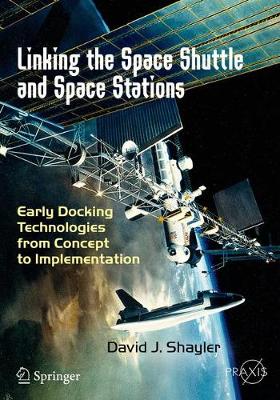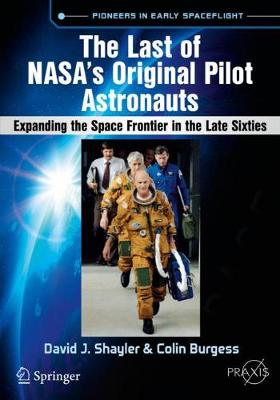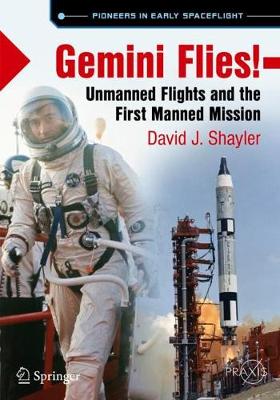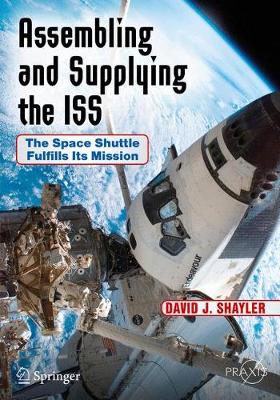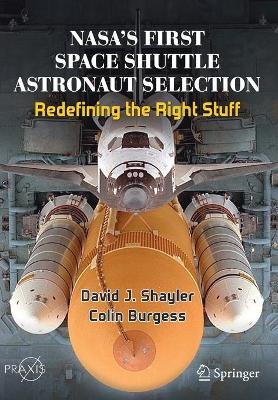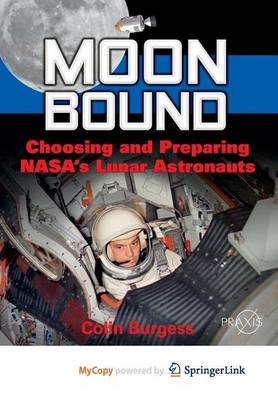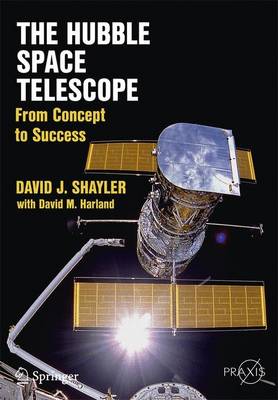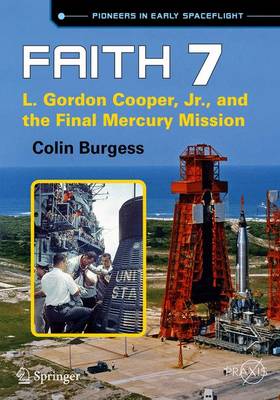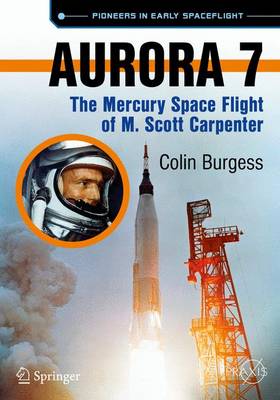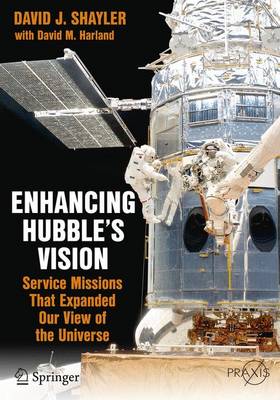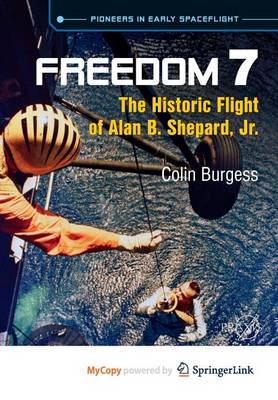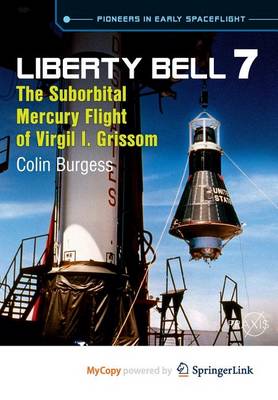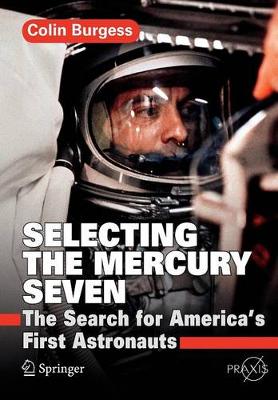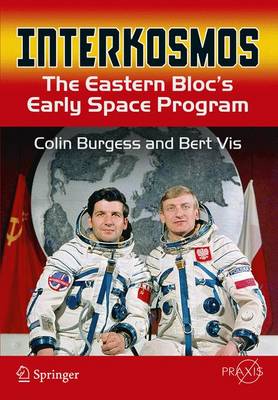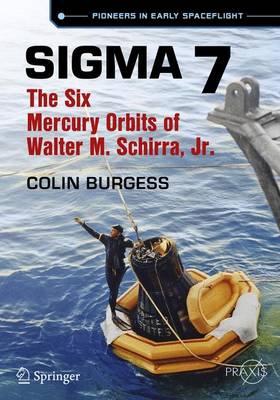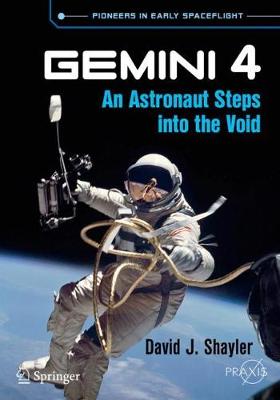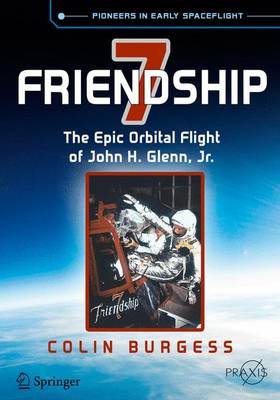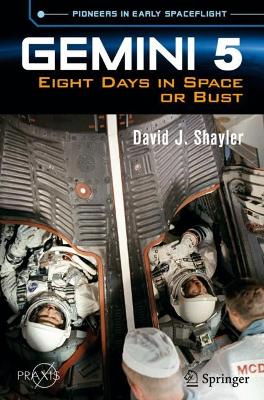Springer Praxis Books
19 total works
Docking technologies had to constantly evolve as the designs of the early space stations changed. It was hoped the shuttle would make missions to the Russian Salyut and American Skylab stations, but thesewere postponed until the Mir station became available, while plans for getting a new U. S. space station underway were stalled.
In Linking the Space Shuttle and Space Stations, the author delves into the rich history of the Space Shuttle and its connection to these early space stations, culminating in the nine missions to dock the shuttle toMir. By 1998, after nearly three decades of planning and operations, shuttle missions to Mir had resulted in:
• A proven system to link up the space shuttle to a space station• Equipment and hands-on experience in handling tons of materials• An infrastructure to support space station assembly and resupply
Each of these played a pivotal role in developing the skills and procedures crucial to the creation of the later, much larger and far more complex International Space Station, as described in the companionvolume Assembling and Supplying the ISS: The Space Shuttle Fulfills Its Mission.
The Last of NASA's Original Pilot Astronauts
by David J Shayler and Colin Burgess
Resulting from the authors’ deep research into these two pre-Shuttle astronaut groups, many intriguing and untold stories behind the selection process are revealed in the book. The often extraordinary backgrounds and personal ambitions of these skilled pilots, chosen to continue NASA’s exploration and knowledge of the space frontier, are also examined.
In April 1966 NASA selected 19 pilot astronauts whose training was specifically targeted to the Apollo lunar landing missions and the Earth-orbiting Skylab space station. Three years later, following the sudden cancellation of the USAF’s highly classified Manned Orbiting Laboratory (MOL) project, seven military astronauts were also co-opted into NASA’s space program.
This book represents the final chapter by the authors in the story of American astronaut selections prior to the era of the Space Shuttle. Through personal interviews and original NASA documentation, readers will also gain a true insight into a remarkable age of space travel as it unfolded in the late 1960s, and the men who flew those historic missions.
In May 1961, President John F. Kennedy committed the United States to landing a man on the moon before the end of the decade. With just a handful of years to pull it off, NASA authorized the Project Gemini space program, which gathered vital knowledge needed to achieve the nation’s goal. This book introduces the crucial three-step test program employed by the Gemini system, covering:
- The short unmanned orbital flight of Gemini 1 that tested the compatibility of launch vehicle, spacecraft and ground systems.
- The unmanned suborbital flight of Gemini 2 to establish the integrity of the reentry system and protective heat shield.
- The three-orbit manned evaluation flight of Gemini 3, christened ‘Molly Brown’ by her crew. A mission recalled orbit by orbit, using mission transcripts, post-flight reports and the astronauts’ own account of their historic journey.
Fulfilling an objective it had been designed to complete decades before, 37 Shuttle missions carried the majority of the hardware needed to build the ISS and then acted as a ferry and supply train for early resident crews to the station. Building upon the decades of development and experience described in the companion volume Linking the Space Shuttle and Space Stations: Early Docking Technologies from Concept to Implementation, this book explores
• a purpose-built hardware processing facility • challenging spacewalking objectives • extensive robotic operations • undocking a unmanned orbiter
The experience and expertise gained through these missions allows space planners to improve space construction skills in advance of even more ambitious plans in the future.
NASA's First Space Shuttle Astronaut Selection
by David J Shayler and Colin Burgess
Unofficially they called themselves the TFNG, or the Thirty-Five New Guys. Officially, they were NASA’s Group 8 astronauts, selected in January 1978 to train for orbital missions aboard the Space Shuttle. Prior to this time only pilots or scientists trained as pilots had been assigned to fly on America’s spacecraft, but with the advent of the innovative winged spacecraft the door was finally opened to non-pilots, including women and minorities. In all, 15 of those selected were categorised as Pilot Astronauts, while the other 20 would train under the new designation of Mission Specialist. Altogether, the Group 8 astronauts would be launched on a total of 103 space missions; some flying only once, while others flew into orbit as many as five times. Sadly, four of their number would perish in the Challenger tragedy in January 1986.
In their latest collaborative effort, the authors bring to life the amazing story behind the selection of the first group of Space Shuttle astronauts, examining their varied backgrounds and many accomplishments in a fresh and accessible way through deep research and revealing interviews. Throughout its remarkable 30-year history as the workhorse of NASA’s human spaceflight exploration, twice halted through tragedy, the Shuttle fleet performed with magnificence. So too did these 35 men and women, swept up in the dynamic thrust and ongoing development of America’s Space Shuttle program.
"This book on the Group 8 Astronauts, the TFNGs, is an excellent summation of the individuals first selected for the new Space Shuttle Program. It provides insight into what it took to first get the Space Shuttle flying. For any space enthusiast it is a must read."
- Robert L. Crippen PLT on STS-1“As a reader, I had many moments where long, lost memories of the triumph and tragedy of the space shuttle program were brilliantly reawakened at the turn of a page. Loved it! This is a must-have book for every space enthusiast’s library.”
- TFNG Mission Specialist Astronaut Richard ‘Mike’ Mullane, author of Riding Rockets: The Outrageous Tales of a Space Shuttle Astronaut
“Many of the anecdotes in the book brought back memories of challenges, opportunities, and a team of men and women who were committed not just to the space program, but to one another...I've gone back to it several times as a reference source.”
- TFNG Steve Hawley, 5-time Space Shuttle Mission Specialist Astronaut
"The TFNG book is incredible and amazingly thorough! The detail in the book is awesome! It is my go-to book for any of the details I’ve forgotten."
- TFNG Dr. Rhea Seddon, 3-time Space Shuttle Mission Specialist Astronaut.
"I can't believe how detailed and complete it is!!! FANTASTIC work!!!"
- TFNG Robert L."Hoot" Gibson, 5-time Space Shuttle Pilot & Commander and former Chief of the NASA Astronaut Office
This book provides an overview of the origins of the Apollo program and descriptions of the ground facilities, launch vehicles and spacecraft that were developed in the quest to reach - and return from - the surface of the moon. It will serve as an invaluable single-volume sourcebook for space enthusiasts, space historians, journalists, and others. The text includes a comprehensive collection of tables listing facts and figures for each mission.
This book draws on interviews to tell the astronauts' personal stories and recreate the drama of that time. It describes the process by which they were selected as astronauts and explains how the criteria had changed since the first group. "Moon Bound" is divided into two parts, recounting the biographies relating to the nine astronauts from NASA's Group 2 in the first part, and the fourteen finalists in Group 3 in the second part.
The stories of both selection groups are narrated through the experiences of four finalists with interesting backgrounds. One of these men is Al Rupp of the USAF who, as a West Point cadet, cheekily helped to steal the Navy mascot goat prior to the annual Army versus Navy game in 1953, thus achieving legendary status in the game's history. Rupp was killed in a plane crash just two years after being named as a finalist for Group 3. The service career of naval aviator John Yamnicky was also very much the equal of other finalists, but he was killed on September 11, 2001, as he was a passenger on hijacked Flight 77, which was flown into the Pentagon.
At the end of the work there are several chapters on how these candidates were prepped for their missions.
The highly successful Hubble Space Telescope was meant to change our view and understanding of the universe. Within weeks of its launch in 1990, however, the space community was shocked to find out that the primary mirror of the telescope was flawed. It was only the skills of scientists and engineers on the ground and the daring talents of astronauts sent to service the telescope in December 1993 that saved the mission.
For over two decades NASA had developed the capabilities to service a payload in orbit. This involved numerous studies and the creation of a ground-based infrastructure to support the challenging missions. Unique tools and EVA hardware supported the skills developed in crew training that then enabled astronauts to complete a demanding series of spacewalks.
Drawing upon first hand interviews with those closely involved in the project over thirty years ago this story explains the development of the servicing mission concept and the hurdles that had to be overcome to not only launch the telescope but also to mount the first servicing mission – a mission that restored the telescope to full working order three years after its launch, saved the reputation of NASA, and truly opened a new age in understanding of our place in space.
This is not just a tale of space age technology, astronauts and astronomy. It is also a story of an audacious scientific vision, and the human ingenuity and determination to overcome all obstacles to make it possible. Hubble Space Telescope: From Concept to Success is a story of an international partnership, dedicated teamwork and a perfect blend of human and robotic space operations that will inspire people of all ages. The subsequent servicing missions that enabled the telescope to continue its scientific program beyond its 25th year in orbit are described in a companion volume Enhancing Hubble’s Vision: Servicing a National Treasure.
This book celebrates the final spaceflight in the Mercury series, flown by NASA astronaut Gordon Cooper, who led an adventurous life in the cockpit of airplanes and spacecraft alike, and on his Mercury mission he became the last American ever to rocket into space alone. He flew in the Mercury and Gemini programs and served as head of flight crew operations in both the Apollo and Skylab programs.
Based on extensive research and first-person interviews, this is a complete history of the Faith 7 flight and its astronaut. Cooper later gained notoriety following the release of the movie, The Right Stuff, in which he was depicted by Dennis Quaid, but Burgess discovers there was even more drama to his story. It completes the "Pioneers in Early Spaceflight" subseries in fitting fashion.
TO A NATION enthralled by the heroic exploits of the Mercury astronauts, the launch of Lt. Cmdr. Scott Carpenter on NASA’s second orbital space flight was a renewed cause for pride, jubilation and celebration. Within hours, that excitement had given way to stunned disbelief and anxiety as shaken broadcasters began preparing the American public for the very real possibility that an American astronaut and his spacecraft may have been lost at sea.
In fact, it had been a very close call. Completely out of fuel and forced to manually guide Aurora 7 through the frightening inferno of re-entry, Carpenter brought the Mercury spacecraft down to a safe splashdown in the ocean. In doing so, he controversially overshot the intended landing zone. Despite his efforts, Carpenter’s performance on the MA-7 mission was later derided by powerful figures within NASA. He would never fly into space again.
Taking temporary leave of NASA, Carpenter participated in the U.S. Navy’s pioneering Sealab program. For a record 30 days he lived and worked aboard a pressurized habitat resting on the floor of the ocean, becoming the nation’s first astronaut/aquanaut explorer.
Following extensive research conducted by noted spaceflight historian Colin Burgess, the drama-filled flight of Aurora 7 is faithfully recounted in this engrossing book, along with the personal recollections of Scott Carpenter and those closest to the actual events.
This book tells the story of the four missions to maintain Hubble's successful operation. Between 1997 and 2009 these repaired, serviced and upgraded the instruments on the telescope to maintain its state-of-the-art capabilities. It draws on first hand interviews with those closely involved in the project. The spacewalking skills and experiences gained from maintaining and upgrading Hubble had direct application to the construction of the International Space Station and help with its maintenance. These skills can be applied to future human and robotic satellite servicing and maintenance activities as well, not only in Earth orbit but at locations deeper in space.
A companion to this book, The Hubble Space Telescope: From Concept to Success, relates the events of the Telescope’s launch in 1990 and its rough start, after a 20-year struggle to place a large optical telescope in orbit. Originally intended to operate for fifteen years, Hubble has just passed its 25th anniversary, and there is every expectation that it will survive for thirty years. Despite its early problems, the Hubble Space Telescope has become a lasting legacy of the Space Shuttle program, and indeed is a national treasure.
Inevitably, there are times in a nation's history when its hopes, fears and confidence in its own destiny appear to hinge on the fate of a single person. One of these pivotal moments occurred on the early morning of May 5, 1961, when a 37-year-old test pilot squeezed himself into the confines of the tiny Mercury spacecraft that he had named Freedom 7. On that historic day, U.S. Navy Commander Alan Shepard carried with him the hopes, prayers, and anxieties of a nation as his Redstone rocket blasted free of the launch pad at Cape Canaveral, hurling him upwards on a 15-minute suborbital flight that also propelled the United States into the bold new frontier of human space exploration.
This book tells the enthralling story of that pioeering flight as recalled by many of the participants in the Freedom 7 story, including Shepard himself, with anecdotal details and tales never before revealed in print.
Although beaten into space just three weeks earlier by the Soviet cosmonaut Yuri Gagarin, Alan Shepard's history-making mission aboard Freedom 7 nevertheless provided America's first tentative step into space that would one day see its Apollo astronauts - including Alan Shepard - walk on the Moon.
This book focuses on the Interkosmos program, which was formed in 1967, marking a fundamentally new era of cooperation by socialist countries, led by the Soviet Union, in the study and exploration of space. The chapters shed light on the space program that was at that time a prime outlet for the Soviet Union's aims at becoming a world power.
Interkosmos was a highly publicized Russian space program that rapidly became a significant propaganda tool for the Soviet Union in the waning years of communism. Billed as an international “research-cosmonaut” imperative, it was also a high-profile means of displaying solidarity with the nine participating Eastern bloc countries. Those countries contributed pilots who were trained in Moscow for week-long “guest” missions on orbiting Salyut stations. They did a little subsidiary science and were permitted only the most basic mechanical maneuvers.
In this enthralling new book, and following extensive international research, the authors fully explore the background, accomplishments and political legacy of the Interkosmos program. Through personal and often highly revealing interviews with many of the participants they relate the very human story behind this extraordinary but controversial space venture..
Colin Burgess offers a comprehensive yet personal look at the 1962 orbital mission of Wally Schirra aboard the spacecraft Sigma 7, the first book about this popular pioneering astronaut which explores his entire life and accomplishments. This continues the Pioneers in Early Spaceflight series, the volumes of which form an excellent record of Project Mercury's pioneering early phase of the Space Age.
Schirra’s pre-NASA life is examined, as well as his training as a NASA astronaut and for his Mercury MA-8 flight. The 6-orbit flight of Sigma 7 is fully covered from its origins through to the spacecraft’s safe recovery from the ocean after a highly successful Mercury mission. Schirra’s participation on the Gemini 6 and Apollo 7 missions is also told, but in brief, and the book also relates his post-NASA life and activities through to his passing in 2007. The Mercury Seven occupy a unique spot in the history of human spaceflight, and Schirra is atlast given his due as one of the contributing astronauts in this painstakingly researched book.
The flight of Gemini 4 in June 1965 was conducted barely four years after the first Americans flew in space. It was a bold step by NASA to accomplish the first American spacewalk and to extend the U.S. flight duration record to four days. This would be double the experience gained from the six Mercury missions combined.
This daring mission was the first to be directed from the new Mission Control at the Manned Spacecraft Center near Houston, Texas. It also revealed that:
- Working outside the spacecraft would require further study.
- Developing the techniques to rendezvous with another object in space would not be as straightforward as NASA had hoped.
- Living in a small spacecraft for several days was a challenging but necessary step in the quest for even longer flights.
In this spellbinding account of an historic but troubled orbital mission, noted space historian Colin Burgess takes us back to an electrifying time in American history, when intrepid pioneers were launched atop notoriously unreliable rockets at the very dawn of human space exploration.
A nation proudly and collectively came to a standstill on the day this mission flew; a day that will be forever enshrined in American spaceflight history. On the morning of February 20, 1962, following months of frustrating delays, a Marine Corps war hero and test pilot named John Glenn finally blazed a path into orbit aboard a compact capsule named Friendship 7.
The book's tension-filled narrative faithfully unfolds through contemporary reports and the personal recollections of astronaut John Glenn, along with those closest to the Friendship 7 story, revealing previously unknown facts behind one of America's most ambitious and memorable pioneering space missions.
Friendship 7.
The book's tension-filled narrative faithfully unfolds through contemporary reports and the personal recollections of astronaut John Glenn, along with those closest to the Friendship 7 story, revealing previously unknown facts behind one of America's most ambitious and memorable pioneering space missions.
Friendship 7 story, revealing previously unknown facts behind one of America's most ambitious and memorable pioneering space missions.
This third book of the Gemini mission series focuses on the flight that simulated in Earth orbit the duration of an eight-day Apollo mission to the Moon. After the proof-of-concept test flights Gemini 1, 2 and 3 (as described in GEMINI FLIES!) and the success of the first American EVA as well as the four-day U.S. mission (GEMINI 4), NASA gained the confidence to gradually increase mission time spent in orbit.
This is the first known book to focus solely on the Gemini 5 mission and its challenges with equipment failures and difficult living conditions. The mission was targeted to double the endurance of the previous one, and as such was an integral stepping stone for an even more audacious mission four months later.
Attempting the eight- and then fourteen-day durations would be an opportunity for America to gain the lead in space exploration over the Soviets. This mission pioneered the duration of a flight to the Moon and back three years before Apollo 8 made that journey, without a lunar landing, for the first time.